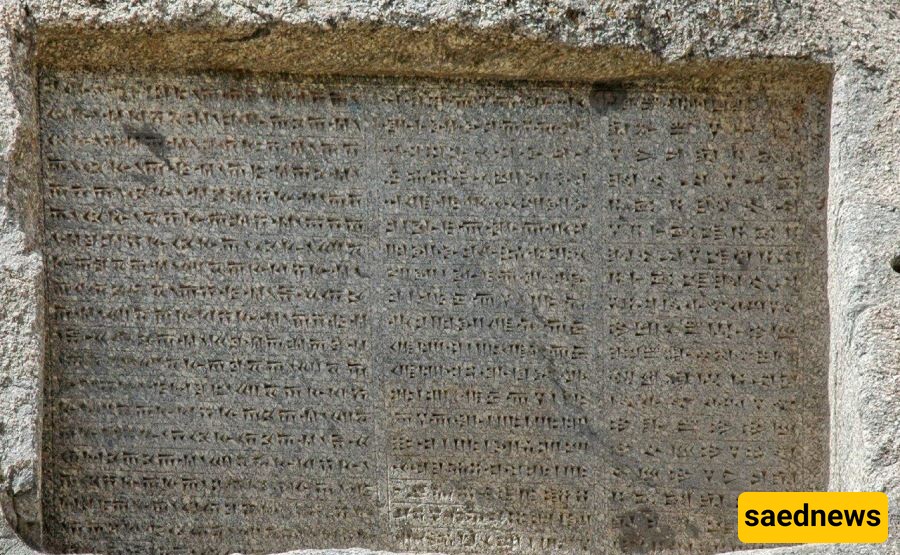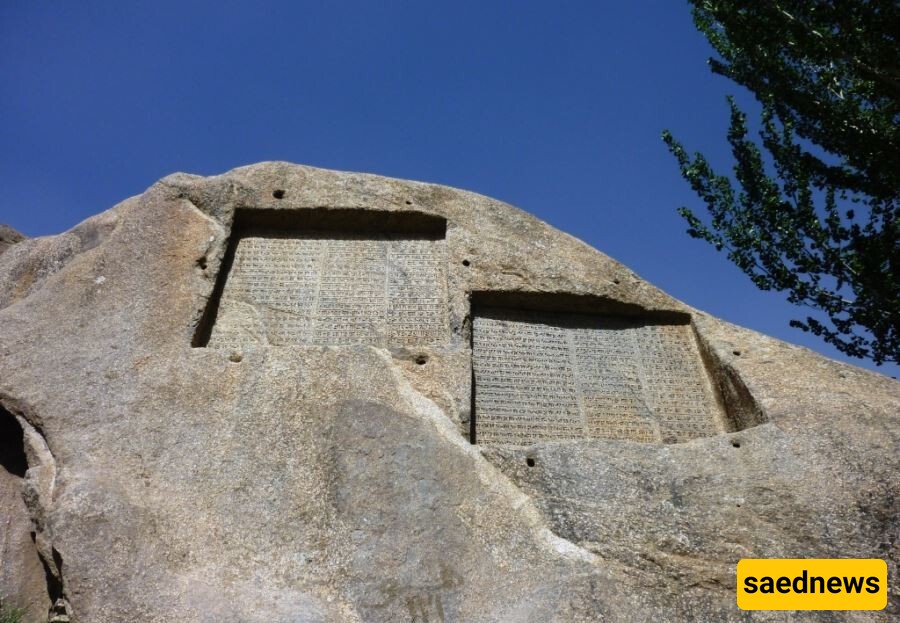SAEDNEWS: The Ganjnameh Inscriptions, carved into Iran's Alvand Mountains near Hamedan, date back to the Achaemenid era. These rock carvings by Darius I and Xerxes I reveal key insights into ancient Persian rulers' beliefs and power.

Reporting from SAEDNEWS, nestled within the Alvand Mountains close to Hamedan, the Ganjnameh Inscriptions represent one of Iran's oldest historical records. These inscriptions, carved during the Achaemenid Empire in the 5th century BCE, reflect the might and spirituality of rulers like Darius I and Xerxes I. Written in Old Persian, Elamite, and Babylonian, the carvings provide a rare glimpse into the religious and cultural ideals that defined the empire.
Commissioned by prominent Achaemenid leaders Darius I and his successor Xerxes I, the Ganjnameh inscriptions reveal the accomplishments and spiritual grounding of early Persian governance. Darius, known for expanding and solidifying the empire’s infrastructure and administration, marked the peak of Persian influence. His son, Xerxes, reinforced this legacy, using inscriptions such as those at Ganjnameh to assert the empire’s strength and heritage.
The strategic location of Ganjnameh near the ancient city of Hegmataneh (modern-day Hamedan) allowed these messages to be visible to travelers and traders, emphasizing the rulers' divine right to rule and the empire’s vast influence.
Two main panels make up the Ganjnameh Inscriptions, each inscribed in three languages—Old Persian, Elamite, and Babylonian. This trilingual approach underscores the empire's linguistic diversity and the rulers' efforts to communicate across their territories:
Darius I's Inscription: Darius praises Ahura Mazda, the chief deity of Zoroastrianism, for granting him power and success. He credits his achievements to divine support, affirming his right to rule over Persia.
Xerxes I's Inscription: Xerxes, in a similar style, acknowledges Ahura Mazda and stresses his succession from Darius. His proclamation reinforces the continuity of divine favor for the royal family.
These statements emphasize the rulers' divinely sanctioned power, a central concept in Achaemenid kingship. The inscriptions not only project royal authority but also the connection between the ruler and the divine.

Carved directly into the mountain face, the inscriptions showcase ancient Persian craftsmanship and their skill with cuneiform script. The elevated positioning of the texts required great precision, demonstrating the importance of these messages.
The choice to use three languages reflects the empire's multicultural reach and linguistic diversity. By inscribing these declarations in Old Persian, Elamite, and Babylonian, the empire ensured that the messages were understood across their domains, from Persia to Elam and Babylon, thus reinforcing authority over diverse regions.
The inscriptions highlight the importance of religion within Achaemenid rule, specifically their devotion to Ahura Mazda, the supreme deity in Zoroastrianism. By attributing their reign to divine support, both Darius and Xerxes underscored the religious foundations of their authority.
Beyond political messages, the inscriptions illustrate cultural values that defined Persian society, such as justice, faith, and loyalty. Acknowledging the gods’ influence over their rule symbolized that the kings’ power was not solely from conquest but from divine endorsement, strengthening their legitimacy.
Today, the Ganjnameh Inscriptions have become a key attraction in Hamedan, drawing history enthusiasts and travelers interested in Persian heritage. Positioned near the Ganjnameh Waterfall, the site combines historical intrigue with natural beauty, making it a prominent landmark.
Efforts by Iranian cultural organizations aim to preserve these inscriptions, recognizing their importance as ancient artifacts. With interpretive resources and guided tours, visitors gain insights into the Achaemenid Empire and its influence, making Ganjnameh a cornerstone of educational tourism in Iran.
Preserving the Ganjnameh Inscriptions presents challenges due to natural weathering and human activity. Exposure to wind, rain, and temperature fluctuations poses risks, while increased tourism requires careful management to prevent accidental damage. Iranian heritage groups are implementing protective measures to safeguard the inscriptions, ensuring their preservation for future generations.
Conservation initiatives, combined with public education, are key to maintaining this ancient legacy, allowing Iran to continue showcasing Ganjnameh as a historical gem and a lasting piece of its cultural heritage.

The Ganjnameh Inscriptions offer an enduring connection to Iran’s ancient past, capturing the essence of Achaemenid rule and the religious beliefs of its leaders. As both a historical treasure and a reflection of Persian values, Ganjnameh remains a vital part of Iran’s heritage. Through ongoing conservation and appreciation, this remarkable site will continue to inspire and inform, preserving a significant chapter of ancient Persian history.

